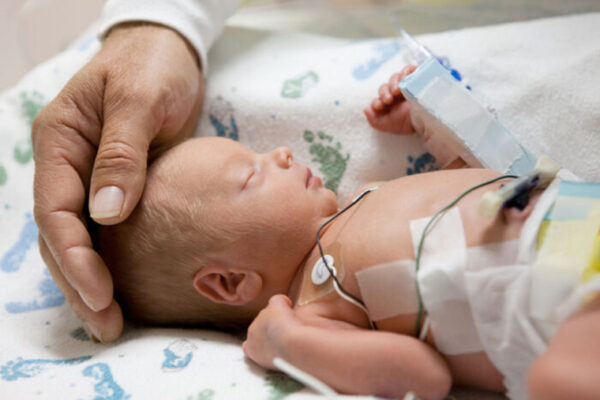The overuse of antibiotics poses an increasing threat to children who develop — or already have — drug-resistant infections that are difficult or impossible to treat, and can cause extended hospitalization, disability and even death.
At any given time, about 1 in 3 patients in U.S. children’s hospitals receive one or more antibiotics. However, for one-quarter of those children, the antibiotic treatments are unnecessary or otherwise “suboptimal,” according to research led by Washington University School of Medicine in St. Louis.
The research — involving nearly 12,000 children at 32 U.S. children’s hospitals — is published online in Clinical Infectious Diseases, a journal of the Infectious Diseases Society of America.
The study also found that nearly half of this inappropriate use of antibiotics would have gone undetected by current antibiotic stewardship programs designed to prevent antibiotic resistance. Such programs involve the routine review of certain patient prescriptions to determine if the correct dose, drug and duration were used. Problems can be flagged and addressed through such reviews.
“Antibiotic resistance is a growing danger to everyone; however, there is limited data on children,” said Jason Newland, MD, a Washington University professor of pediatrics in the Division of Pediatric Infectious Diseases and director of the Antimicrobial Stewardship Program at St. Louis Children’s Hospital, where he treats patients.
“Data on adults have suggested that 30% to 50% of antibiotics used in hospitalized adults is inappropriate,” Newland said. “Our goal was to understand if antibiotics used to treat hospitalized children were suboptimal, meaning doctors shouldn’t have prescribed any antibiotics; they could have used a more effective antibiotic; or they could have prescribed a different dose or for a shorter duration. Health-care workers must be vigilant since the inappropriate use of antibiotics is fueling dangerous drug resistance in children.”
The multicenter study involved examining the medical records of 11,784 children from birth to age 17 who had been prescribed, in 32 U.S. children’s hospitals, one or more antibiotics to treat or prevent infections. The researchers evaluated data collected on six separate days from July 2016 through December 2017.
Researchers found 2,946 (25%) of the patients received at least one antibiotic deemed suboptimal.
Altogether, health-care providers prescribed antibiotics 17,110 times. Of those, 3,593 were considered suboptimal. The most common cases of inappropriate antibiotic use included:
- 27% due to “bug-drug mismatch,” meaning the wrong antibiotic was given for a particular infection.
- 17% due to prolonged antibiotic use after surgery to prevent surgical-site infections.
- 11% due to use of antibiotics when they were unnecessary.
- 11% due to use of broad-spectrum antibiotics, when a drug that targets a specific type of bacteria could have been used.
The study also found that almost half of the suboptimal prescriptions identified in the study would not have been routinely reviewed by the physicians and pharmacists involved in hospital antimicrobial stewardship programs, which only scrutinized the use of specific drugs.
“Arguably, this is one of the most important findings because it helps us to identify blind spots in antimicrobial stewardship programs,” Newland said. “Antibiotics currently not targeted for review still have a significant need for oversight. The obvious solution is to expand routine reviews to include all antibiotics. Unfortunately, this is resource-intensive and may not be feasible at some hospitals.”
However, the study also pinpointed medical conditions that would benefit from increased scrutiny. For example, the most common medical condition for antibiotic prescriptions was bacterial lower respiratory tract infection, or pneumonia. It also accounted for the greatest percentage of suboptimal prescriptions — 18%.
A number of suboptimal prescriptions stemmed from antibiotics used to prevent surgical-site infections, mainly because the drug was prescribed for longer than necessary. “Notably, recently revised guidelines from the Centers for Disease Control and Prevention recommend that some surgeries limit antibiotics to a single preoperative dose,” Newland said. “This means that an even greater proportion of the cases in our study now would be considered suboptimal.”
The study involved researchers from seven other institutions: University of Michigan in Ann Arbor; Children’s Mercy Hospital in Kansas City, Mo.; Novant Health Eastover Pediatrics in Charlotte, N.C.; University of Pennsylvania in Philadelphia; Children’s Hospital of Philadelphia; University of Utah in Salt Lake City; and the University of Washington in Seattle. Participating hospitals were recruited by the Sharing Antimicrobial Reports for Pediatric Stewardship Collaborative, which Newland co-founded and currently leads.
“Our study also highlights the need for antimicrobial stewardship programs to expand current practices and efforts,” Newland said. “Such evolution is imperative to ensure optimal antibiotic use for all hospitalized children.”



